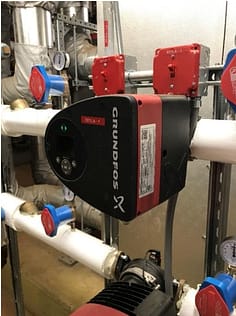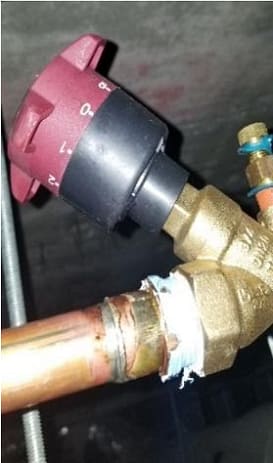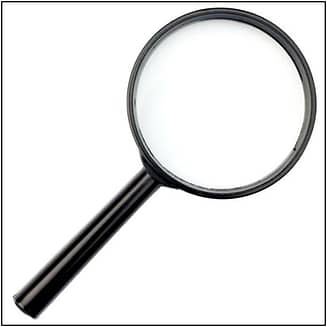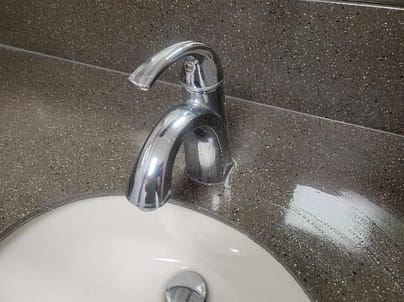It has become more and more common in the recent years for the TAB firm to be involved in balancing and troubleshooting domestic water systems in facilities, especially on new construction medical and administration facilities. The system design for these facilities typically utilize a handful of circulating loops, usually one or two per floor level of the building, with a circuit setter type balancing valve for each loop and a set of redundant circulating pumps. As expected with typical designs, problems encountered with the system would also be typical. It would usually be the same issues, installation not per contract drawings or manufacturer recommendations, pumps not meeting intended flows, and required check valves not denoted in contract documents. Issues of this nature were generally easy to identify by just measuring flows and inspecting system components. However, in a recent project this was not the case. This article is intended to provide a case study of some less typical issues and troubleshooting methods that proved to be effective.
The site was a large multi-story medical facility renovation project, and the system entailed new domestic hot water (DHW) risers tied into an existing main system (pumps, heat exchangers, etc.) outside of the project renovation space. The DHW balance scope was originally covered under the plumbing contractor’s scope of work (not TAB), so there was minimal time invested in pre-TAB inspections and system design by the TAB firm. Shortly before owner occupancy after the commissioning agent identified failure to meet temperature on multiple fixtures throughout the renovated area, our firm was contacted by the Owner to assist the plumbing contractor in troubleshooting the system. Because the plumbing scope included both renovated and existing areas, there were no accurate drawings of the complete system. After reviewing the available drawings and consulting with the contractors, we identified forty-four different plumbing risers distributed down from the top floor of the facility down to the existing bottom floor as opposed to a floor level circulating loop as typically seen. These risers crossed over areas between floors, were routed through walls and did not even serve every floor. The location of the balancing valves was not identified on the drawings because they all were installed in the existing unrenovated spaces; however, the design documents noted that each riser was designed for ½ GPM of DHW return flow. With the help of the contractors, we were able to locate all balancing valves but there were no as-builts or valve identification provided to determine which valves served which risers.
Assess Total Flow

In a typical system, initial balancing procedures included measuring total flow and system capacity limitations. With the use of an ultrasonic flow meter, we were able to determine our total flow was operating at less than half the design flow of the 44 risers it served. The struggle with testing domestic hot water systems, specifically circulation pumps, is there are limited means of testing system pressure losses and total pump head. Typically, no pressure test ports are provided and we are always concerned about contaminating the potable system by inserting a meter or gauge. Even though we could not measure actual pump head, we were concerned that the main return loop pipe size was not much larger than the individual riser pipe size picked for only ½ GPM of flow. Once we measured the actual pipe size for the main loop, we then determined the velocity at design flow would be in excess of 18 feet per second. We discussed our findings with the owner and requested the design engineer get involved. After a brief onsite meeting and visual walk of the system, the design engineer of record agreed the existing system main line was undersized and the aged existing pumps needed to be upsized and replaced.
Check Balancing Valves – Are They Hot or Not?
 After a few days of time sensitive work and equipment replacement by the contractor team, we were requested to measure total flow on the system and set the balancing valves to design flow. Unfortunately, we found more issues. Setting total flow for the system was no longer a challenge with the main piping correctly sized and re-circulating pump station replaced. The owner and contractors saw immediate results in some areas of the facility, but not in others indicating there were some more balancing efforts needed. After a round of pre-reads at each balancing valve and first round proportioning cut with an ultrasonic flow meter, we determined twenty percent of the balancing valves were still low on flow. Additionally, some of the valves with measured flow were still cold to the touch. We contacted the owner and contractor team and expressed our concerns. The plumbing contractor began tracing piping and found some risers isolated in different areas of the building, and some cross connects on the floors above. Several hours into this team effort and slowly we were getting flow and temperature on more and more of the balancing valves. After all other options were exhausted, we still had five balancing valves with no flow. Each one had a check valve upstream of the valve, but we did not have an instrument that was sanitized to check pressures in the potable system. Luckily, the plumbing contractor had purchased a potable water meter specifically for balancing this project that had only been used for this system and our balancing valves had pressure test ports for reading pressure across the valve. With this combination, the plumbing contractor measured pressures on both sides of the balancing valve. We were able to determine through their measurements which units had pressure entering the valve but not leaving which indicated there was something wrong with the valve. They replaced these balancing valves and we finally achieved flow and temperature. The valves identified to not have pressure at the balancing valve, were then tested at the check valve to see if there was pressure at the check valve. This method helped identify some malfunctioning check valves and missed upstream isolation valves. Through all these troubleshooting methods, we now had design flow and warm temperature at every balancing valve except two. The plumbing contractor traced these two piping runs and identified these were cold-water supply lines that should not have been piped back to the domestic hot water return. They were isolated and eventually permanently capped.
After a few days of time sensitive work and equipment replacement by the contractor team, we were requested to measure total flow on the system and set the balancing valves to design flow. Unfortunately, we found more issues. Setting total flow for the system was no longer a challenge with the main piping correctly sized and re-circulating pump station replaced. The owner and contractors saw immediate results in some areas of the facility, but not in others indicating there were some more balancing efforts needed. After a round of pre-reads at each balancing valve and first round proportioning cut with an ultrasonic flow meter, we determined twenty percent of the balancing valves were still low on flow. Additionally, some of the valves with measured flow were still cold to the touch. We contacted the owner and contractor team and expressed our concerns. The plumbing contractor began tracing piping and found some risers isolated in different areas of the building, and some cross connects on the floors above. Several hours into this team effort and slowly we were getting flow and temperature on more and more of the balancing valves. After all other options were exhausted, we still had five balancing valves with no flow. Each one had a check valve upstream of the valve, but we did not have an instrument that was sanitized to check pressures in the potable system. Luckily, the plumbing contractor had purchased a potable water meter specifically for balancing this project that had only been used for this system and our balancing valves had pressure test ports for reading pressure across the valve. With this combination, the plumbing contractor measured pressures on both sides of the balancing valve. We were able to determine through their measurements which units had pressure entering the valve but not leaving which indicated there was something wrong with the valve. They replaced these balancing valves and we finally achieved flow and temperature. The valves identified to not have pressure at the balancing valve, were then tested at the check valve to see if there was pressure at the check valve. This method helped identify some malfunctioning check valves and missed upstream isolation valves. Through all these troubleshooting methods, we now had design flow and warm temperature at every balancing valve except two. The plumbing contractor traced these two piping runs and identified these were cold-water supply lines that should not have been piped back to the domestic hot water return. They were isolated and eventually permanently capped.
Check Fixtures
 We spent another morning walking each individual fixture with the owner to verify we were getting hot water everywhere. Adjustments had to be made to multiple fixtures at their independent mixing valves by the plumbing contractor. After all this was complete, we finally had warm water at all the fixtures in the building. After multiple late evenings and a weekend of repairs and troubleshooting, the owner felt comfortable to begin activating the campus move-in. We communicated to the Owner that the system would need to be re-checked for instant hot water once it was left stagnant over night because too many people had been running the system during our troubleshooting and repair efforts. Over the next week or so of furniture move-in, the owner identified several fixtures that were taking several minutes to produce hot water. We went back through the system and verified we had correct flow at each domestic balancing valve. It was difficult to identify the exact problem because once one fixture on a riser was timed, it had to sit stagnant again for hours to see if the problem was corrected.
We spent another morning walking each individual fixture with the owner to verify we were getting hot water everywhere. Adjustments had to be made to multiple fixtures at their independent mixing valves by the plumbing contractor. After all this was complete, we finally had warm water at all the fixtures in the building. After multiple late evenings and a weekend of repairs and troubleshooting, the owner felt comfortable to begin activating the campus move-in. We communicated to the Owner that the system would need to be re-checked for instant hot water once it was left stagnant over night because too many people had been running the system during our troubleshooting and repair efforts. Over the next week or so of furniture move-in, the owner identified several fixtures that were taking several minutes to produce hot water. We went back through the system and verified we had correct flow at each domestic balancing valve. It was difficult to identify the exact problem because once one fixture on a riser was timed, it had to sit stagnant again for hours to see if the problem was corrected.
Trace It Out

Balancing Domestic Hot Water Systems
In the world of commercial building projects, there may not always be accurate drawings, ideal test methods, typical designs or knowledgeable contractors involved with domestic water systems. Sometimes the TAB firm will need to get creative with what they have and analyze the entire system. Below is a summary of steps taken for this specific case that may be helpful in troubleshooting unusual or existing domestic hot water systems.
- Assess Total Flow. Can your pumps handle the flow? Does your main header size accommodate the design flow?
- Check Balancing Valves for design flow. Do you have flow at all your balancing valves? If not where is the restriction? Get creative on troubleshooting and reach out to the contractors for support. Look for pressure and temperature losses. Just be careful any work you do on the system does not contaminate it once chlorination has been performed.
- Is it Hot or Not? Do you have warm water at the end of the domestic loop / riser you are testing? If so, you are moving hot water. If not, look for cross connects or test for flow restrictions.
- Check Fixtures. Many have mixing valves that require adjustment. Does the fixture ever get hot or is there just an extended time delay?
- Trace Out the Loop/Riser. Do you have a long distance the water has to travel from the main loop/riser? Can you physically see the loop traveling back to the circulation pump? Trace it all out the best you can. Make sure it makes sense.
Written by Chase Copeland
